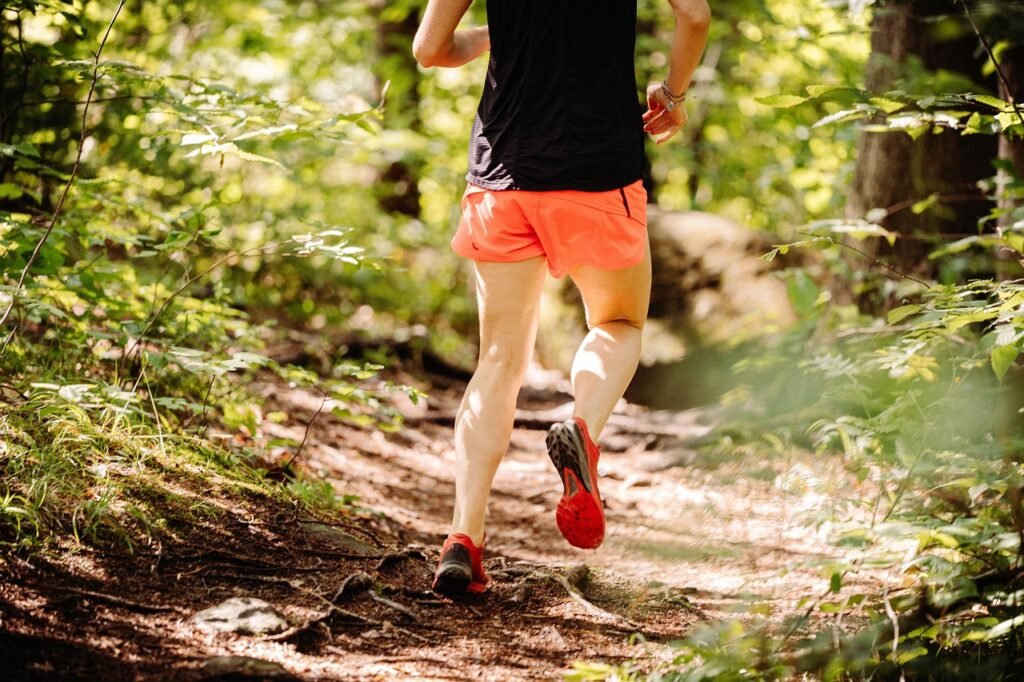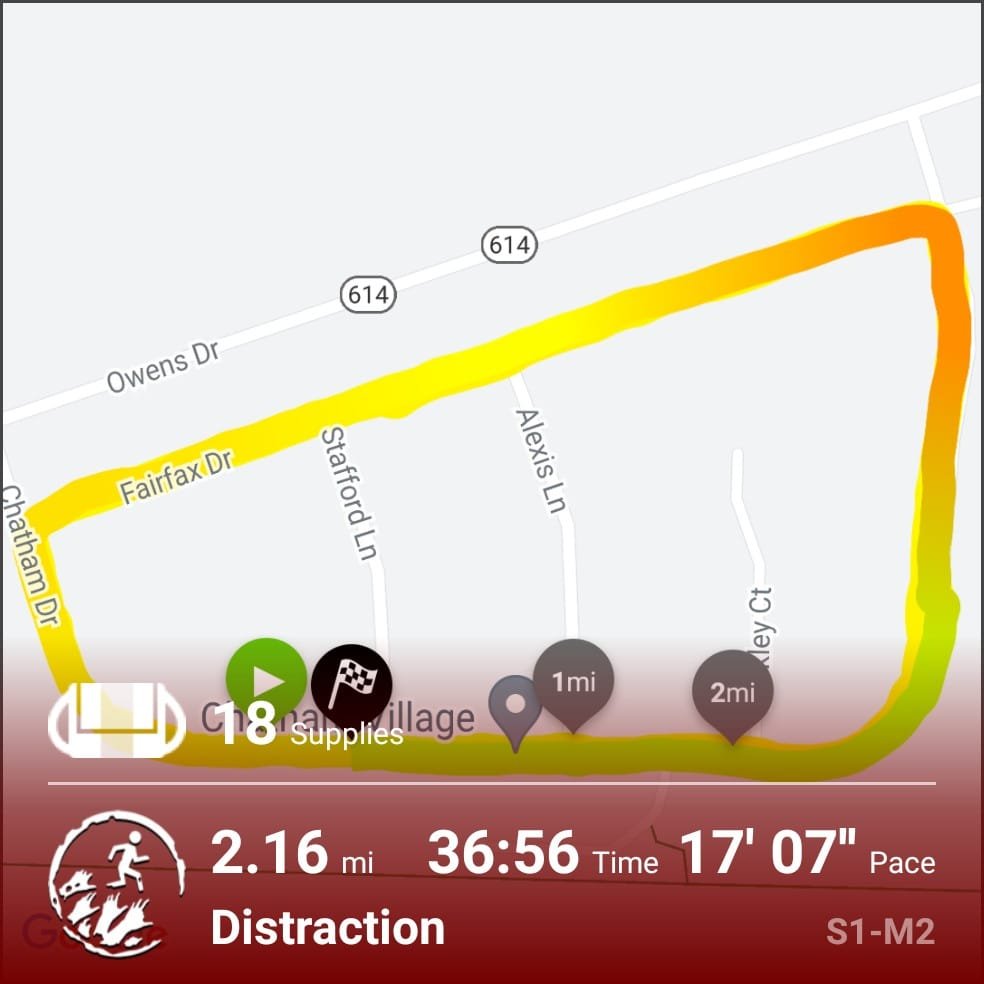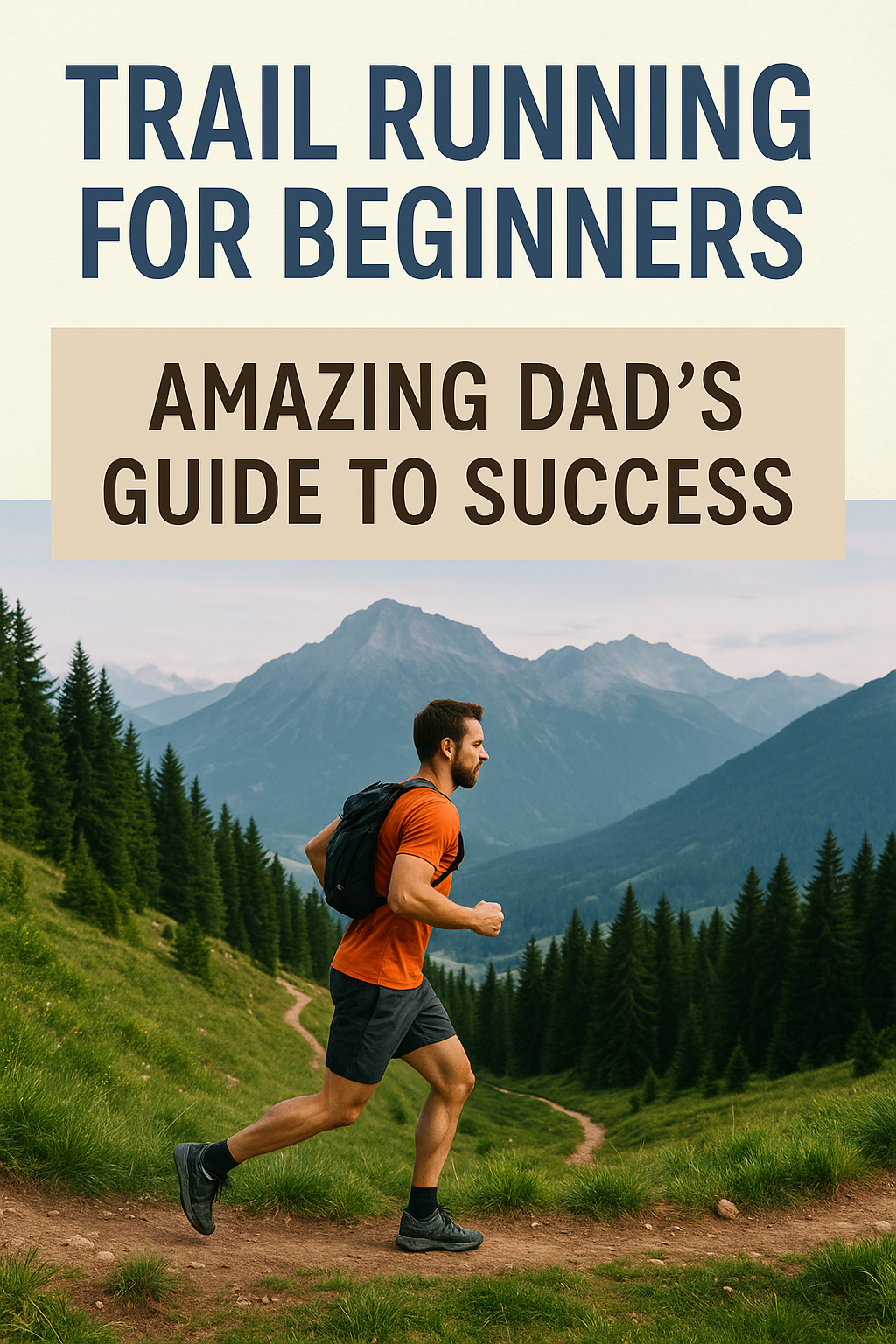Trail Running for Beginners: Amazing Dad’s Guide to Success

There’s something magical about the moment your feet hit that first stretch of dirt trail, leaving the concrete behind for the soft crunch of leaves and the promise of adventure ahead. But my relationship with trail running wasn’t always smooth—it’s been a rollercoaster of passion, injury, ego, and ultimately, redemption.
The smell of Virginia mountain air, the burn in your legs as you tackle that steep incline, and the absolute peace that comes from being surrounded by nothing but trees and sky—that’s what initially drew me to this incredible sport. What I didn’t realize was how much I’d learn about myself, my limits, and the importance of balance along the way. Every trail running for beginners story has its unique challenges, and mine is no exception.
🏃♂️ My Trail Running Origin Story

Back when I was in the military, fitness wasn’t optional—it was survival. I was in decent shape, nowhere near the monstrous 245 pounds I’d eventually balloon to, and I had discovered something that would change my perspective on exercise forever: trail running.
The Virginia mountains became my sanctuary. While my fellow service members were hitting the gym or running endless laps on the base track, I was exploring single-track trails, navigating rocky terrain, and pushing myself up elevations that would leave me gasping but grinning.
I wasn’t fast. I wasn’t particularly graceful. Most races, I’d finish mid-pack or worse, depending on how brutal the elevation profile was. But man, I loved every single step.
⚠️ The Mistakes That Nearly Ended Everything
Here’s where my story takes a turn that every trail running for beginners guide should include as a cautionary tale. According to the American College of Sports Medicine, overuse injuries account for up to 79% of running-related injuries, and ego-driven training is a primary contributor.
There was this workplace competition to see who could log the most miles. Instead of sticking to my comfortable pace and sustainable training plan, I started pushing harder, running longer, and ignoring the warning signs my body was desperately trying to send me. This is exactly the kind of mistake that trail running for beginners should avoid at all costs.
The breaking point came when I decided to tackle a 50K and a 50-mile race in the same month. Same. Month.
Looking back, it was pure madness. My hamstring gave out, and I developed chronic heel bursitis that seemed determined to stick around forever. The trails I loved so much suddenly became a source of pain instead of joy. This experience taught me that trail running for beginners requires patience and progressive training.
💪 The Weightlifting Detour
When running became impossible, I dove headfirst into weightlifting. I traded my hours on mountain trails for hours in the gym, picking things up and putting them down with the same obsessive dedication I’d once applied to trail running.
The transformation was dramatic. I packed on muscle, garnered attention (both good and bad), and discovered there’s something undeniably satisfying about moving serious weight. But here’s what I learned: ego-driven fitness, whether it’s excessive mileage or excessive weight, eventually catches up with you.
Those extra pounds felt great in the mirror but wreaked havoc on my joints. And deep down, something was missing—that connection to nature, the mental clarity that only comes from trail running, and the memory of standing on a mountain peak, looking out over the valley below.
🔄 The Email That Changed Everything
Years passed. I’d resigned myself to gym life, assuming my trail running days were behind me. Then, out of nowhere, I received an email about a race I hadn’t heard mentioned in years—the same race that had been my very first trail running experience back in November 2010.
I remembered that day vividly. No preparation, no fancy gear, just walking up to the registration table and grabbing a race number on impulse. It wasn’t about winning or proving anything—it was pure, unfiltered joy.
That email became both my reason and my motivation. Time to get back where I belonged: on the beautiful trails of Virginia.
🌟 Essential Trail Running for Beginners Tips
If you’re considering trail running for beginners, or like me, trying to return to something you once loved, here’s what I’ve learned through trial, error, and plenty of humility. The Mayo Clinic recommends starting any new exercise program gradually to prevent injury and build sustainable habits.
Start Stupidly Small Your ego will want you to tackle that 10-mile mountain loop on day one. Ignore it completely. Start with a 20-minute walk-jog combo on relatively flat terrain. Your feet, joints, and confidence will thank you. This approach is fundamental to successful trail running for beginners programs.
Invest in Proper Trail Running Gear Good trail running shoes are non-negotiable. Unlike road running, trails demand shoes with aggressive treads, rock plates, and ankle support. Don’t skimp here—your feet and ankles are worth the investment. Quality gear is essential for trail running for beginners safety.
Learn the Trail Running Etiquette Uphill runners have the right of way. Yield to horses and mountain bikers. Pack out what you pack in. These aren’t just rules; they’re how we preserve access to these incredible spaces that make trail running for beginners such a rewarding experience.
Bring the Bug Spray Seriously. Virginia trails are gorgeous, but they’re also home to ticks, mosquitoes, and other creatures that view you as their personal buffet. Learn from my itchy mistakes.
🧠 Mental Strategies for Trail Running Success
Trail running isn’t just physical—it’s a mental game that requires different strategies than road running or gym workouts.
Embrace the Walk Breaks There’s no shame in walking steep sections. Elite trail runners do it too. The goal is forward progress, not maintaining some arbitrary pace that means nothing on technical terrain.
Practice Mindfulness on the Trails Unlike treadmill running where you might zone out to music or TV, trail running demands presence. You’re navigating roots, rocks, and elevation changes that require your full attention. This mindfulness becomes one of the sport’s greatest gifts.
Set Process Goals, Not Outcome Goals Instead of “I will finish this race in under 2 hours,” try “I will maintain good form and enjoy the experience.” Setting positive mindset habits applies directly to trail running success.
📱 Technology That Actually Helps
I discovered something that’s transformed my return to trail running: the Zombies, Run! app. This isn’t your typical fitness tracker—it’s an immersive experience that turns your run into an adventure.
The app is now up to Season 10 and includes structured running plans perfect for trail running for beginners. You can toggle chase scenes on or off (trust me, nothing makes you run faster than zombie growls in your headphones), set mission distances, and even choose whether to pause your external music during story segments.
After completing missions, you get to build your virtual base with supplies you’ve “collected” during your run. It gamifies the experience in a way that keeps you coming back for more.
🏔️ The Beauty of Mountain Trail Running
What makes trail running special isn’t just the physical challenge—it’s the connection to something bigger than yourself. When you’re standing on a ridge line, looking out over miles of Virginia wilderness, your daily stresses seem pretty insignificant.
Mountain trail running teaches patience. You can’t muscle through a technical descent or power up a steep climb without consequences. The mountains demand respect, humility, and presence.
Every trail has its own personality. Some are gentle and welcoming, perfect for building confidence. Others are technical and demanding, requiring every ounce of focus and skill you possess. The variety keeps things interesting and ensures you’re always learning.
💡 Trail Running Motivation for Tough Days
Let’s be honest—there will be days when the couch looks more appealing than the trailhead. Here’s what gets me out the door when motivation is low:
Remember Your Why I don’t run trails to win races or set PRs. I run to feel alive, to connect with nature, and to remember that my body is capable of incredible things when I treat it right.
Focus on the Mental Health Benefits Trail running is therapy disguised as exercise. The combination of movement, nature, and solitude creates a mental reset that no gym workout can match. Building healthy family routines often starts with taking care of your own mental health first.
Document Your Progress Take photos at viewpoints, track how you feel after runs, and celebrate small victories. Progress in trail running isn’t always about speed—sometimes it’s about confidence, endurance, or simply showing up consistently.
🎯 Creating Your Trail Running Training Plan
Building a sustainable approach to trail running for beginners requires patience and progression. Here’s a framework that’s worked for me:
Week 1-4: Base Building
- 3 runs per week, 20-30 minutes each
- Focus on time, not distance or pace
- Mix of flat trails and gentle inclines
- Walk hills without shame
Week 5-8: Adding Challenge
- Increase one run to 45 minutes weekly
- Introduce steeper terrain gradually
- Practice downhill running technique
- Start incorporating trail running gear testing
Week 9-12: Building Confidence
- One longer run (60+ minutes) per week
- More technical terrain
- Back-to-back weekend sessions (if desired)
- Consider first organized trail race
🛡️ Injury Prevention for Trail Runners
My painful lesson with heel bursitis and hamstring injuries taught me that prevention beats rehabilitation every time. Here’s what every trail runner needs to know:
Strength Training Matters Trail running demands more from your stabilizing muscles than road running. Incorporate single-leg exercises, core work, and posterior chain strengthening into your routine.
Listen to Your Body’s Whispers Don’t wait for your body to scream. That slight heel discomfort or minor hamstring tightness is information, not something to ignore or push through.
Recovery Is Part of Training Rest days aren’t lazy days—they’re when your body adapts and grows stronger. Health and well-being strategies must include adequate recovery time.
Cross-Training Benefits Swimming, cycling, and yes, even some weightlifting can make you a stronger, more resilient trail runner. Variety reduces overuse injury risk and keeps training interesting.
🌲 Trail Selection for Beginners
Not all trails are created equal. Here’s how to choose appropriate routes as you develop your trail running skills:
Start Local and Low-Risk Research well-maintained trails with good cell coverage and regular foot traffic. Save the remote wilderness adventures for when your skills and confidence have developed.
Understand Trail Ratings Most trail systems use difficulty ratings similar to ski slopes. Green circles are beginner-friendly, blue squares are intermediate, and black diamonds are advanced. Don’t let ego push you beyond your current ability level.
Study Elevation Profiles A five-mile trail with 2,000 feet of elevation gain is drastically different from a flat five-miler. Learn to read elevation maps and choose routes that match your fitness level.
Have an Exit Strategy Choose loops or out-and-back routes where you can turn around if conditions change or energy flags. Getting stuck miles from your car because you bit off more than you could chew is a mistake you only want to make once.
🏃♀️ Trail Running Gear Essentials
While trail running doesn’t require as much equipment as some outdoor sports, having the right gear makes the experience safer and more enjoyable:
Footwear Is Everything Trail running shoes should fit slightly larger than road shoes to accommodate foot swelling and provide toe room on descents. Look for aggressive lugs, rock protection, and materials that can handle mud and water.
Hydration Strategy Handheld water bottles work for shorter runs, while hydration packs are better for longer adventures. Learn what works for your body and the climate you’re running in.
Safety Equipment Always carry a whistle, tell someone your planned route, and consider a GPS watch or phone app for navigation. The wilderness is beautiful but unforgiving of poor preparation.
Weather-Appropriate Clothing Dress for the conditions at the end of your run, not the beginning. Layers allow you to adjust as your body temperature changes with exertion and elevation.
🚀 The Mental Transformation Trail Running Provides
What started as physical exercise has evolved into something much deeper. Trail running has taught me lessons that extend far beyond fitness:
Patience in Progress Mountains don’t care about your timeline. They’ll teach you that sustainable progress beats rushed goals every time. This lesson applies to parenting, career development, and every other area of life.
Respect for Limits Understanding your boundaries isn’t weakness—it’s wisdom. Trail running forces you to recognize the difference between productive discomfort and dangerous overreach.
Connection to Something Bigger In our hyper-connected digital world, trail running provides blessed disconnection. No emails, no social media, no notifications—just you, the trail, and the present moment.
🎯 Setting Realistic Trail Running Goals
Goal setting in trail running looks different than other fitness pursuits. Here’s how to establish objectives that motivate without overwhelming:
Process Over Outcome Instead of “I want to finish a 50K in six months,” try “I want to consistently run trails twice weekly for the next three months.” Process goals are within your control; outcome goals often aren’t.
Celebrate Small Victories Your first clean descent without falling. Running a hill you previously walked. Completing a route that once intimidated you. These milestones matter more than race times or distance PRs.
Plan Adventures, Not Just Workouts The best trail runs feel like adventures rather than exercise. Plan routes to interesting destinations—waterfalls, viewpoints, or historical sites that make the journey as rewarding as the fitness benefits.
🌅 The Return: My First Run Back
Last night marked my official return to the sport I’ve missed for far too long. No grand plans, no pressure—just lacing up my shoes and seeing how my feet remembered the rhythm of trail running.
The first steps were tentative. Years of weightlifting had changed my body mechanics, and those old injuries whispered reminders of past mistakes. But as I settled into an easy pace, mixing walking with gentle jogging, something magical happened.
My body remembered. Not the speed or endurance—those would take time to rebuild—but the joy. The simple pleasure of forward movement on varied terrain, the satisfaction of navigating small obstacles, and the peace that comes from being surrounded by trees instead of walls.
🎵 Making It Fun: Music and Apps for Trail Running

The right audio experience can transform your trail running sessions. While some purists prefer natural sounds, there’s nothing wrong with finding motivation through technology:
Zombies, Run! Game Elements The app creates narrative tension that keeps you engaged when fatigue sets in. You’re not just running—you’re outrunning zombies, collecting supplies, and advancing an ongoing story.
Music Strategy If you choose music, consider how it affects your pacing. Slower songs can help maintain an aerobic pace on longer runs, while upbeat tracks might be better for hill intervals or shorter, more intense sessions.
Safety Considerations If you run with earbuds, keep one ear free to hear approaching mountain bikers, other runners, or potential hazards. Situational awareness is crucial for trail safety.
🏆 The Long-Term Vision: Sustainable Trail Running
This return to trail running isn’t about reliving past glory or proving anything to anyone. It’s about rediscovering a sustainable relationship with a sport that brings me joy and challenges me in ways a gym never could.
The goal isn’t to immediately jump back into ultramarathons or chase age-group awards. It’s to build a consistent practice that supports my overall health and well-being while respecting the lessons my injuries taught me.
Consistency Over Intensity Better to run three times weekly for years than to burn out in three months. Trail running for beginners succeeds through patience and persistence, not heroic efforts that can’t be sustained.
Community Building Trail running communities are welcoming and supportive. Finding local groups or online communities provides accountability, safety, and shared knowledge that benefits everyone.
Environmental Stewardship As trail runners, we have a responsibility to protect the spaces that bring us so much joy. This means following Leave No Trace principles, supporting trail maintenance efforts, and advocating for public land access.
💭 Reflection: What Trail Running Really Teaches
Standing at the trailhead after that first run back, I realized trail running had never really left me. The skills, the love, the connection—they were all still there, just dormant.
This sport teaches us that setbacks aren’t permanent, that bodies are remarkably resilient, and that sometimes the best way forward is to return to something we once loved with fresh perspective and hard-earned wisdom.
The Virginia mountains are still there, still beautiful, still ready to challenge and inspire. And I’m ready to meet them again, one careful step at a time.
The trail running for beginners journey isn’t just about developing cardiovascular fitness or leg strength—it’s about discovering what your body and mind are capable of when you remove the artificial barriers of gyms and treadmills and let them experience movement as it was meant to be: varied, challenging, and deeply connected to the natural world.
Whether you’re considering your first trail run or, like me, finding your way back to something you once loved, remember this: the trails don’t care about your pace, your past mistakes, or your current fitness level. They’re simply there, waiting to teach you everything you need to know about resilience, patience, and the pure joy of putting one foot in front of the other.
So grab some good shoes, download that Zombies, Run! app, and find a local trail. Your adventure is waiting, and trust me—it’s going to be worth every challenging, beautiful, transformative step.
Explore More from Our Family of Blogs
Mountains Will Move
Faith-based encouragement for everyday families.
Everyday Exposed
No-filter truth hub for critical thinking and clarity.
Thank you for being part of the community. God Bless you and your family.

